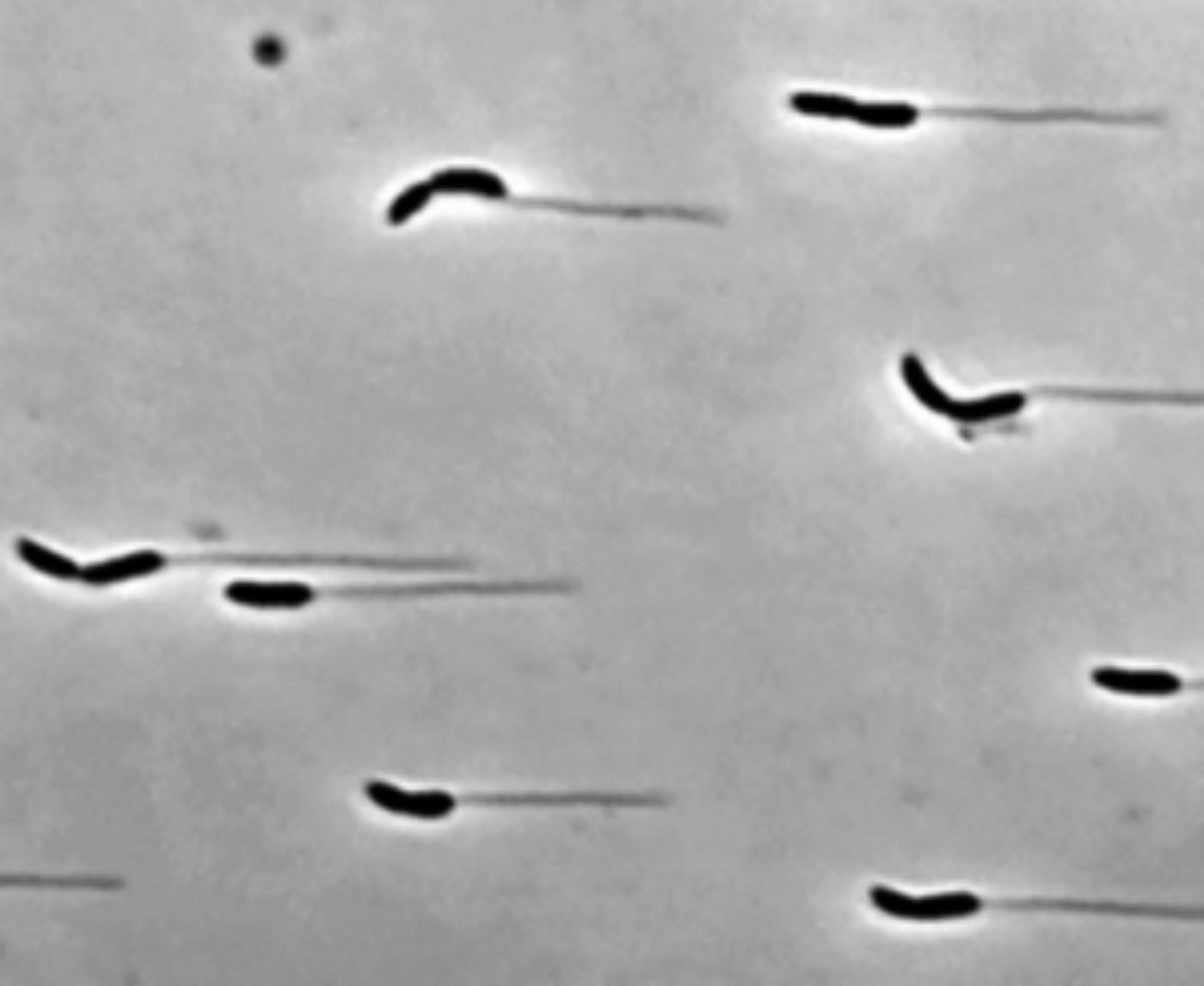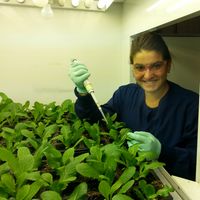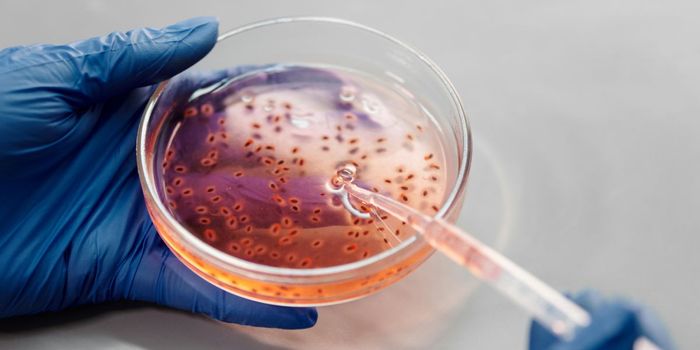Super Glue-Like Bacteria
Caulobacter crescentus is an interesting type of aquatic bacteria that can survive in harsh environments such as fresh water, salt water, and soil. Nutrients in these types of environments are often limited. The bacteria was featured this week on the American Society for Microbiology’s Small Things Considered blog for its unique cell morphologies, strong adhesive abilities, and role as a model for ageing studies.
Caulobacters are able to strongly adhere themselves to surfaces in challenging environments such as small creeks where there is running water or small waves. The “super glue” that allows for this attachment is a tiny blob of polysaccharide. Credit: BioTechniques
In the beginning stages of Caulobacter cell differentiation, the mother cell will produce a stalk which helps it attach to a surface. Once attached, the mother cell will begin to replicate its chromosome and release a ‘swarmer’ daughter cell. Daughter cells are flagellated, meaning they contain a tail that allows them to swim. This tail allows the daughter cell to swim to a place which it can attach and replicate once again.
The stalk of the mother cell is made of a polysaccharide that allows for a holdfast grip in harsh environments. Researchers discovered that stalked Caulobacter cells were not easily removed from surfaces in the laboratory. Previous research has shown that when Caulobacter cells are in the stalked stage while attached to glass microscope slides, cells were unable to be removed with water. Scientists found that even strong jets of water could not detach the bacteria from the glass. This property allows the bacteria to adhere to surfaces in creeks and rivers where there is flowing water or small waves.
This polysaccharide is a crosslinked beta-1,4 N-acetyl glucosamine which is a similar substance that holds bacterial cells together in a biofilm. While the biofilm extrapolysaccharide is described as more of a “slime” the stalk polysaccharide is more of a “glue”. Secretion of the stalk polysaccharide is triggered when the swarming daughter cell detects a surface.
Using Atomic Force Microscopy, scientists found the adhesion strength and holdfast of the Caulobacter stalk to be stronger than the adhesive hairs on the surface of geckos’ toes, known as setae. The polysaccharide that composes the stalk may be an excellent candidate for a biodegradable surgical adhesive. For example, the adhesive strength of this polysaccharide is stronger than the current dentin and enamel adhesives on the market.
Sources: Small Things Considered, MicrobeWiki, BioTechniques









